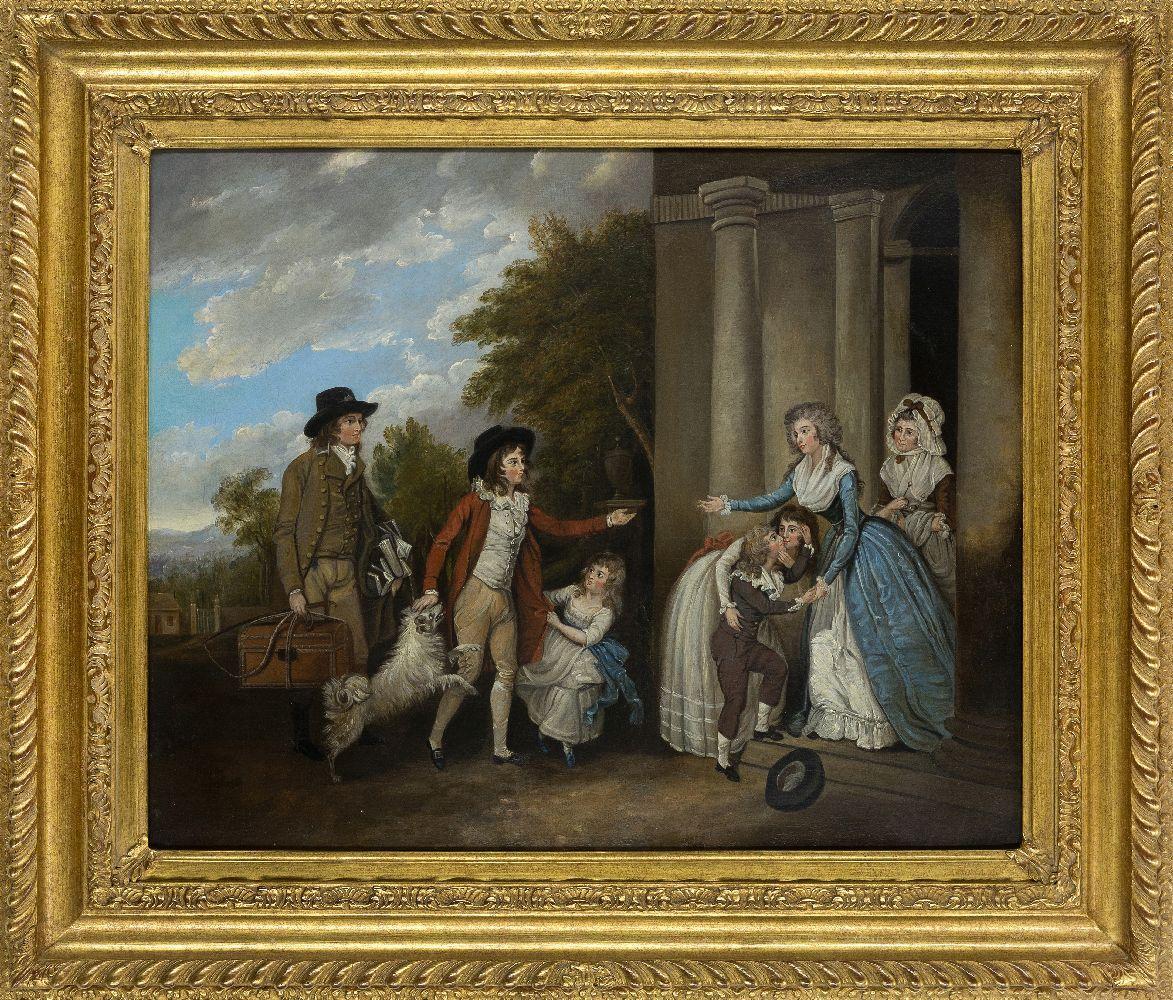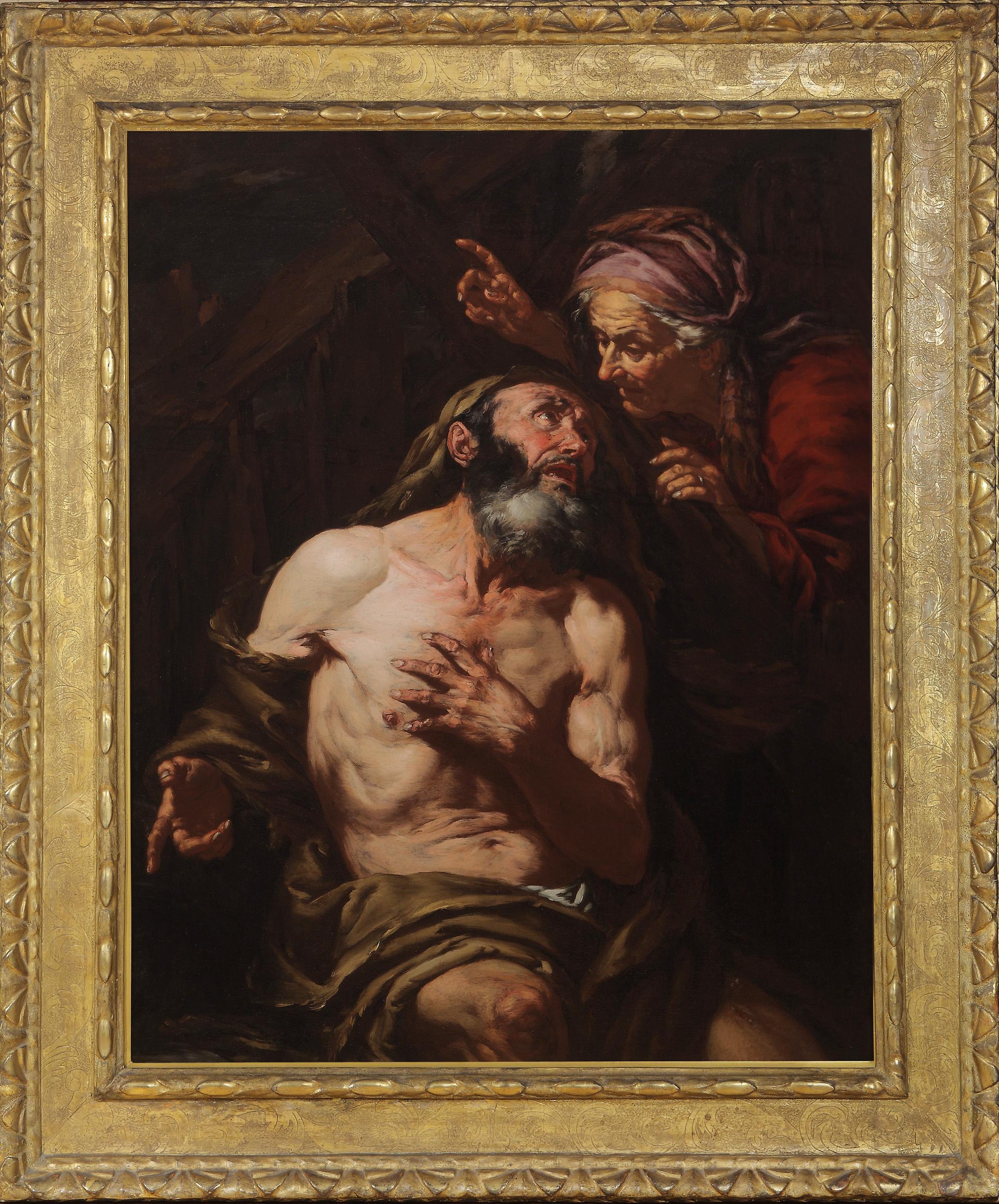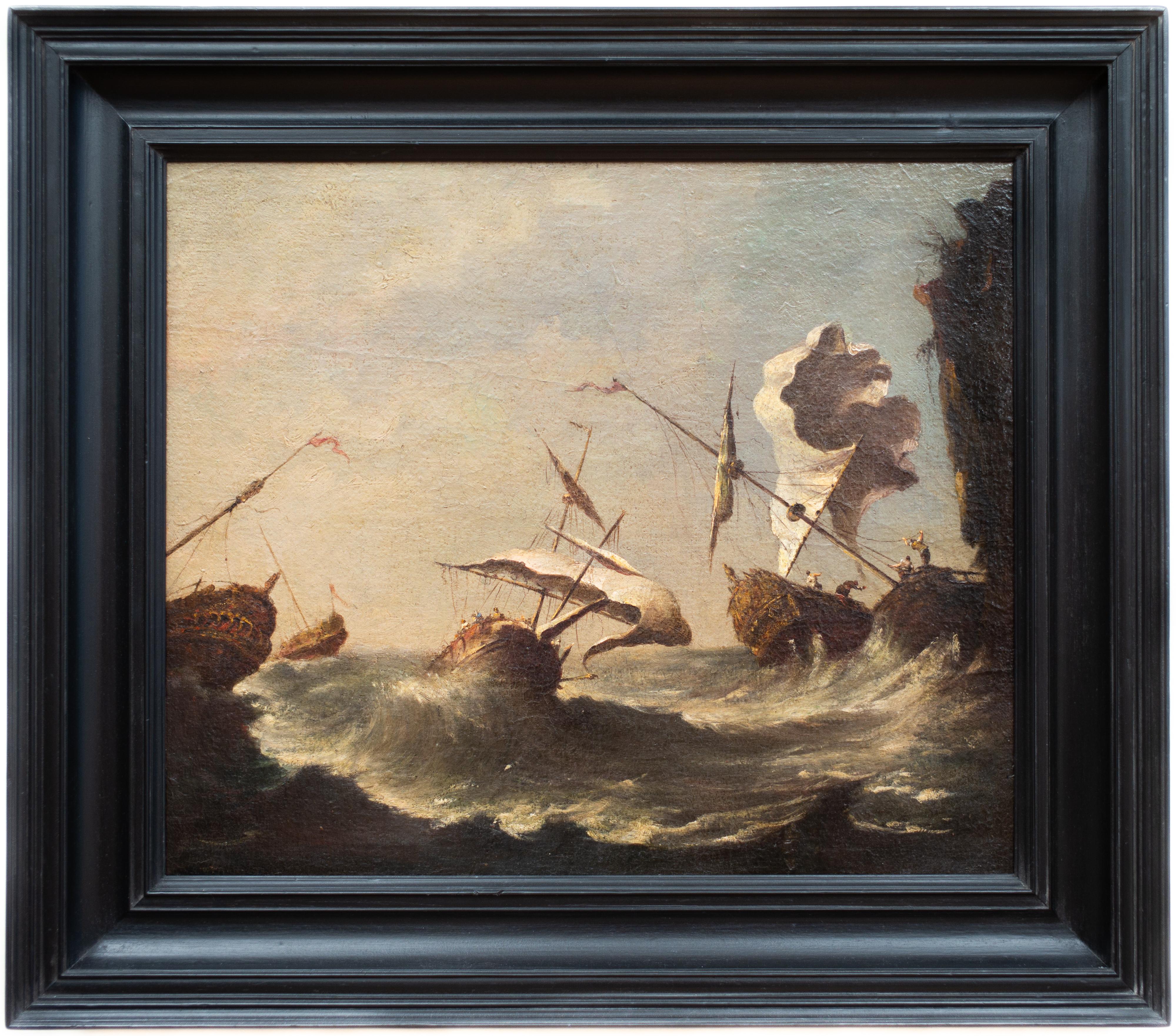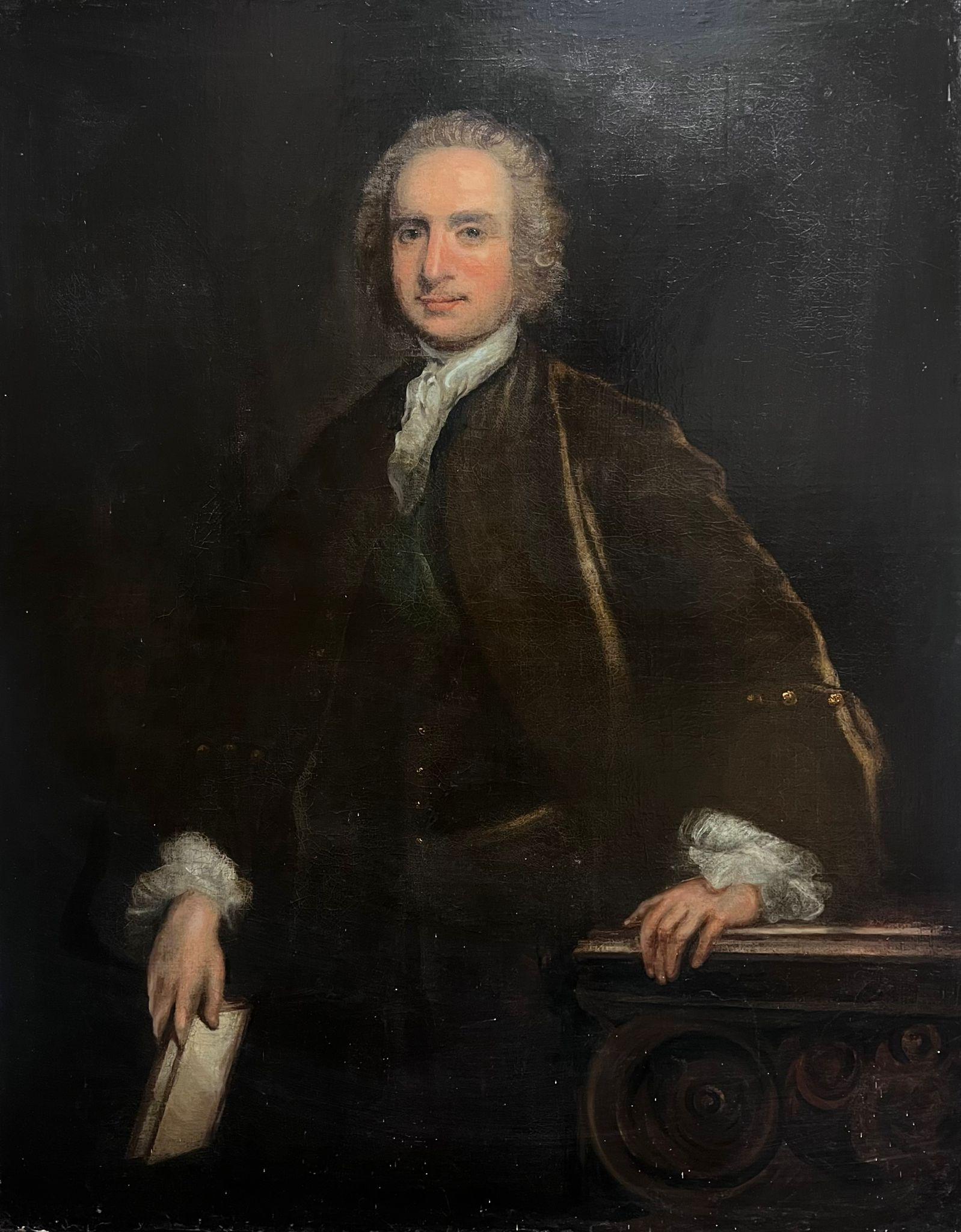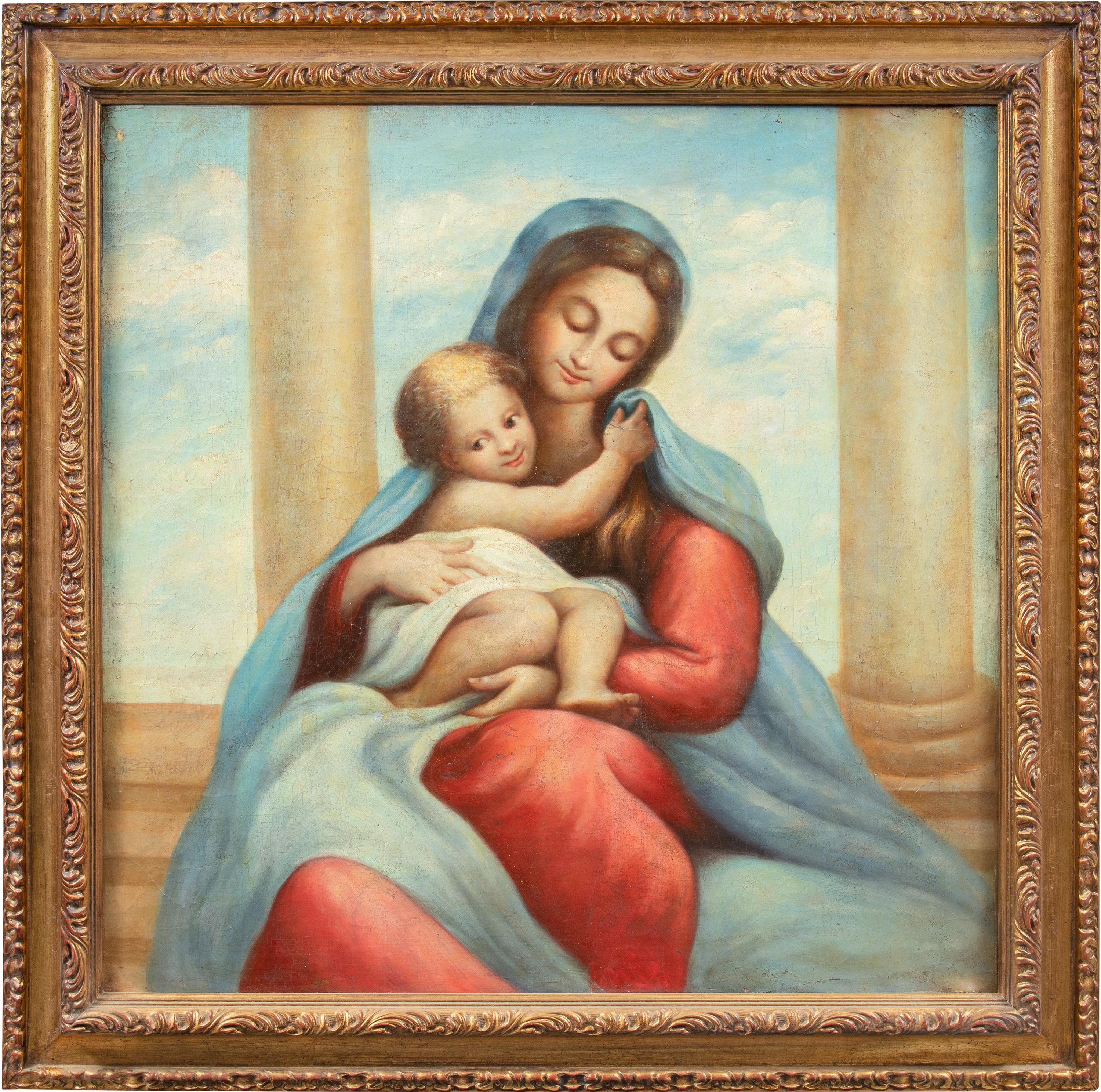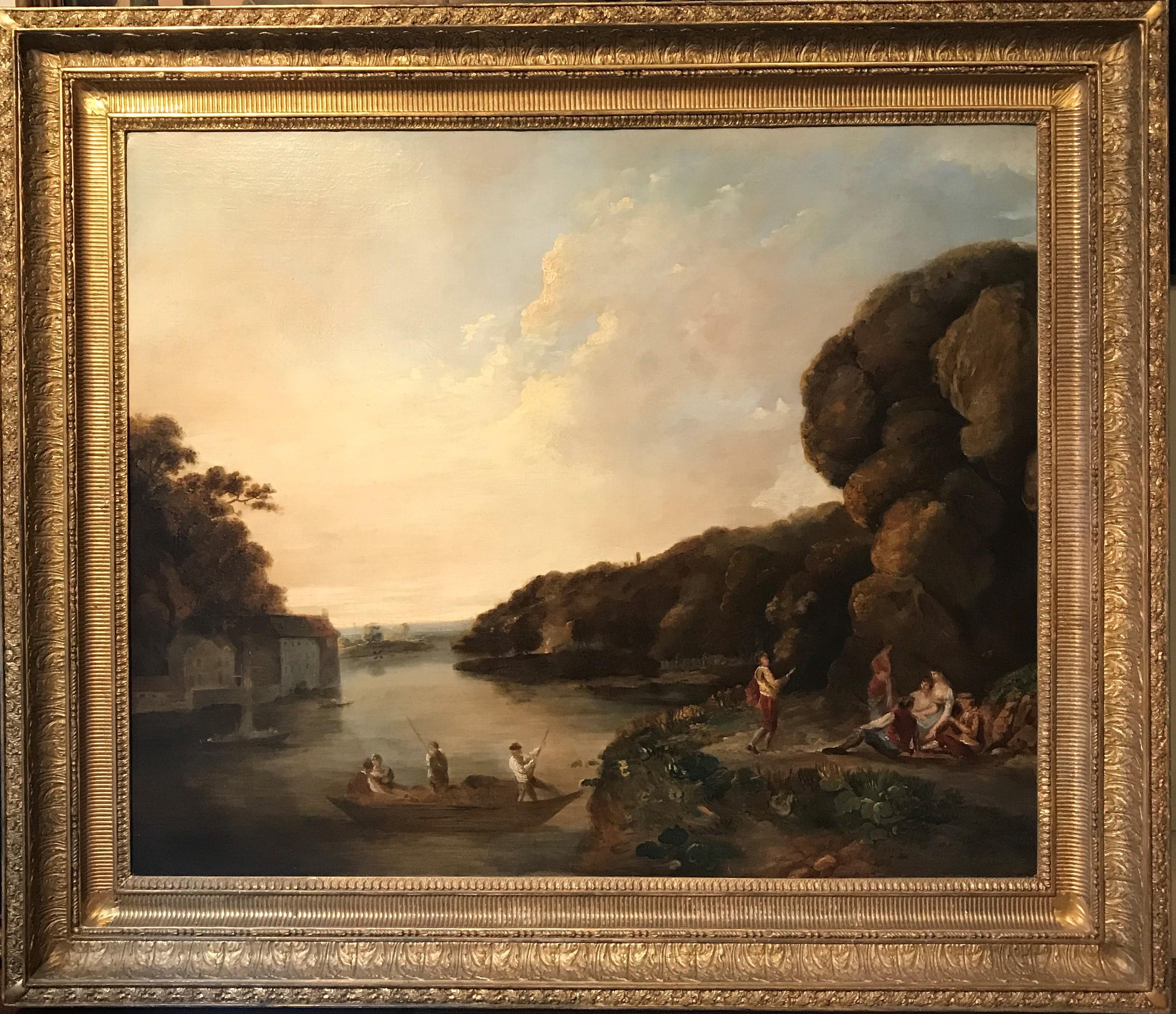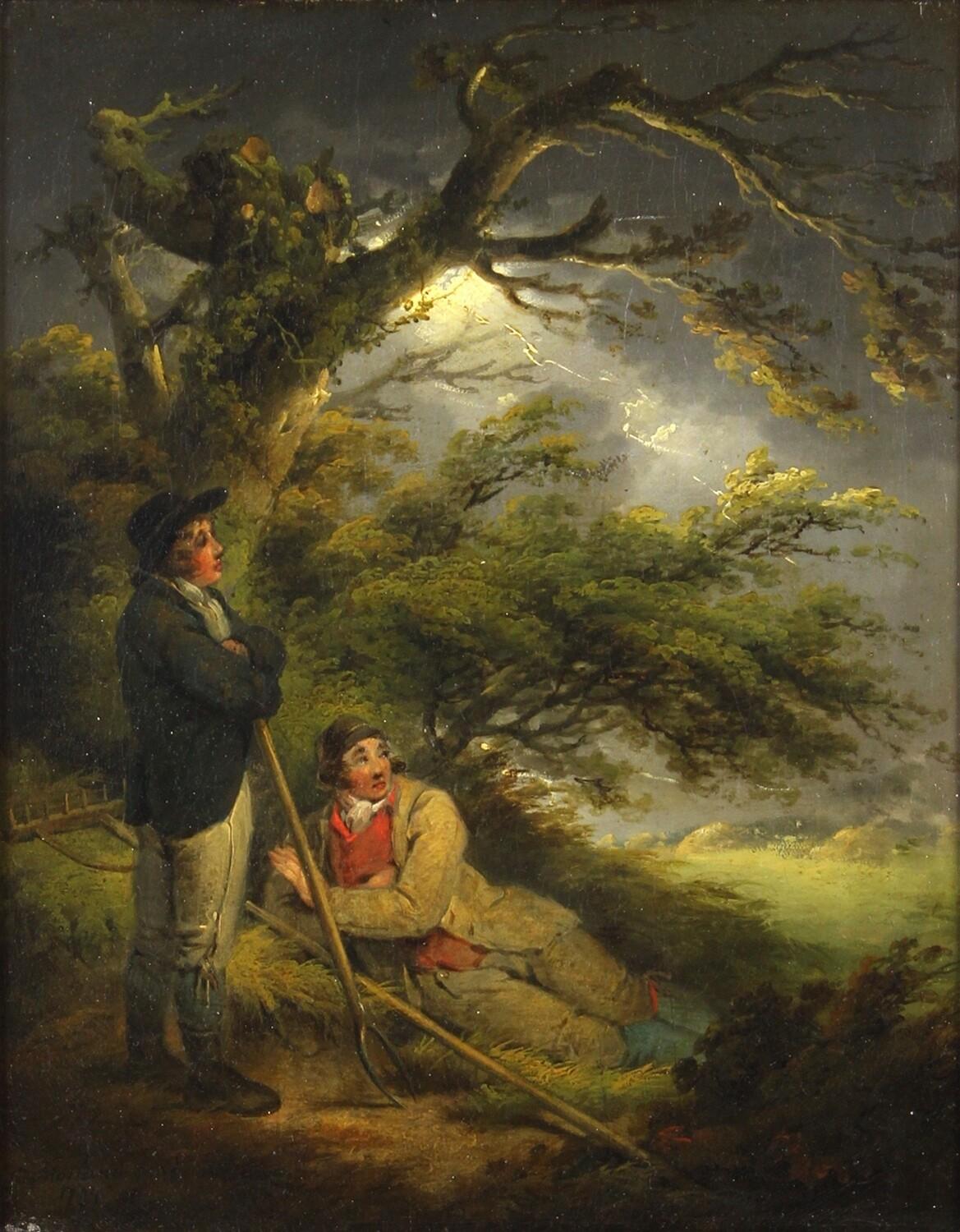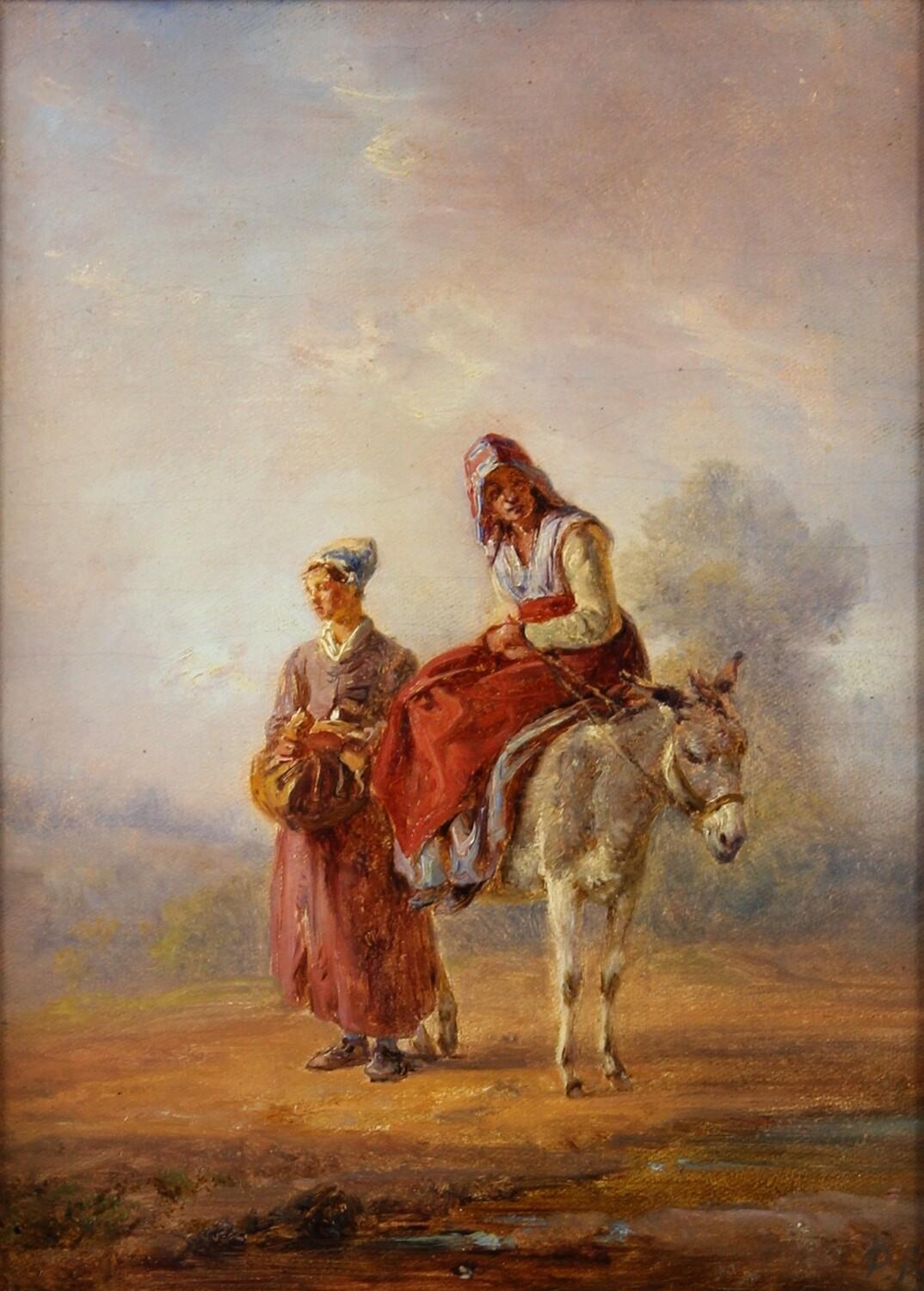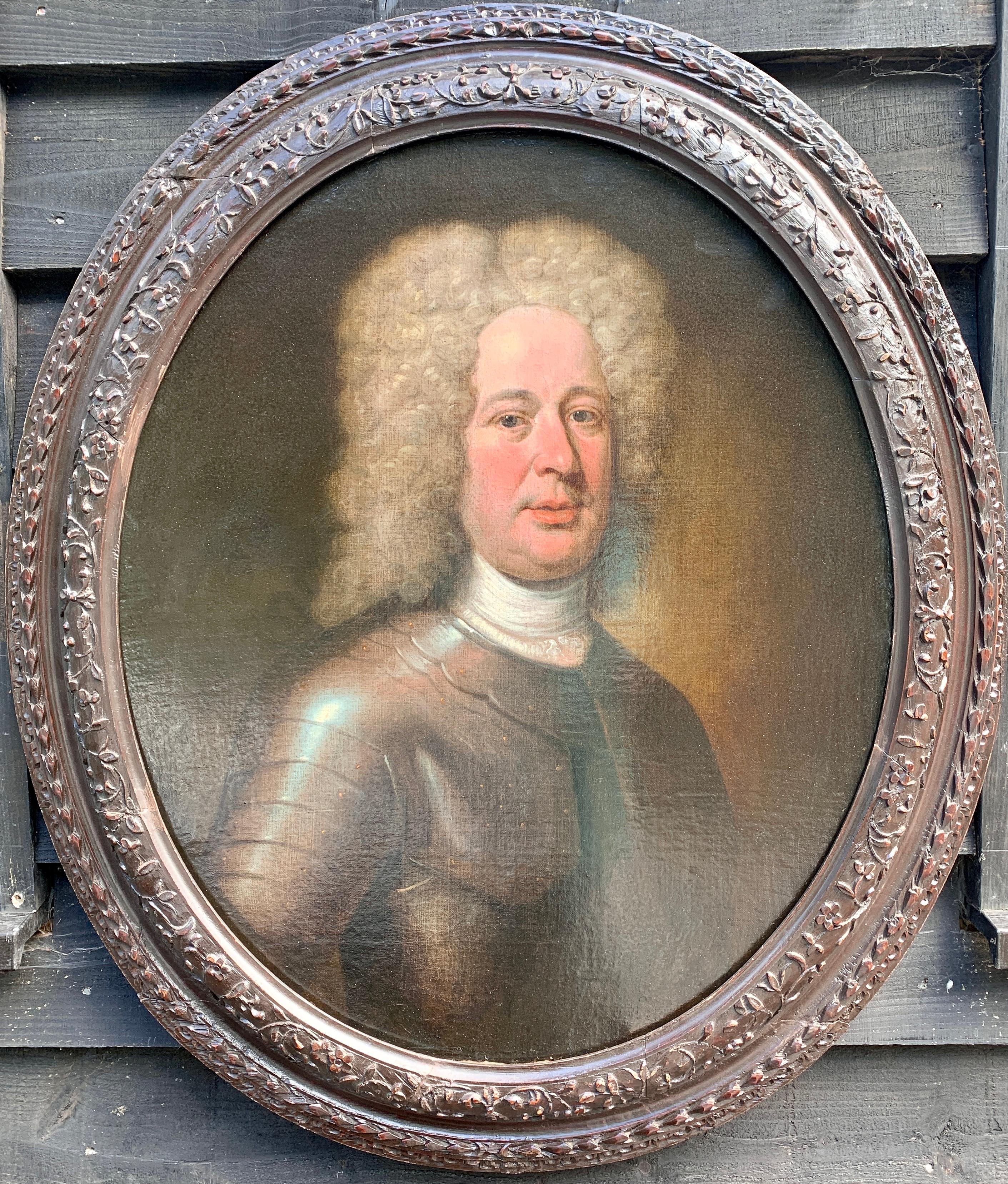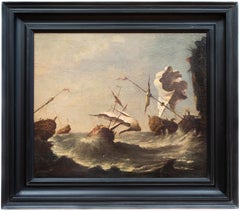
CAVALRY BATTLE - Savisio Italian figurative oil on canvas painting
Want more images or videos?
Request additional images or videos from the seller
1 of 9
Antonio SavisioCAVALRY BATTLE - Savisio Italian figurative oil on canvas painting2006
2006
About the Item
- Creator:Antonio Savisio (1958, Italian)
- Creation Year:2006
- Dimensions:Height: 7.88 in (20 cm)Width: 21.66 in (55 cm)
- Medium:
- Movement & Style:
- Period:
- Framing:Framing Options Available
- Condition:
- Gallery Location:Napoli, IT
- Reference Number:1stDibs: LU56834653281
About the Seller
4.8
Vetted Seller
These experienced sellers undergo a comprehensive evaluation by our team of in-house experts.
1stDibs seller since 2017
145 sales on 1stDibs
Typical response time: Several days
More From This SellerView All
- COUNTRY SCENE- Neapolitan School Italian Figurative Oil on Canvas PaintingBy Jean Philipe MorenoLocated in Napoli, ITCOUNTRY SCENE - Oil on canvas cm.30x24 by Jean Philipe Moreno, Italy 2002. Frame available on request from our workshop. The painting by Jean Philipe Moreno depicts a bucolic scene. Moreno is inspired by the paintings of the Neapolitan School of the 1800s and in particular by the Neapolitan painter Filippo Palizzi...Category
2010s Old Masters Figurative Paintings
MaterialsCanvas, Oil
- CAVALRY BATTLE- Antonio Savisio - Neapolitan School - Oil on canvas Painting,By Antonio SavisioLocated in Napoli, ITLand Battle - Antonio Savisio Italia 2006 - Oil on canvas diam. cm. 30 Gold leaf gilded and laquered wooden frame cm. 47x47 Maestro Antonio Savisio drew inspiration from the master...Category
Early 2000s Old Masters Figurative Paintings
MaterialsCanvas, Oil
- PERSEO AND ANDROMEDA- In the Manner of A.R. Mengs- Italy- Figurative PaintingBy Eugenio De BlasiLocated in Napoli, ITPerseo and Andromeda - Oil on canvas cm.120x80, Eugenio De Blasi, Italy, 2005. Gold gilded wooden frame available on request This is his reinterpretation of a large ancient painting...Category
Early 2000s Old Masters Figurative Paintings
MaterialsCanvas, Oil
- CAVALRY BATTLE - Antonio Savisio Neapolitan School Italy Oil on canvas PaintingBy Antonio SavisioLocated in Napoli, ITLand Battle - Antonio Savisio Italia 2006 - Oil on canvas diam. cm. 30 Gold leaf gilded and laquered wooden frame cm. 47x47 Maestro Antonio Savisio drew inspiration from the masterp...Category
Early 2000s Old Masters Figurative Paintings
MaterialsCanvas, Oil
- CHERUBIM PLAYING - Italian School - Figurative Oil on Canvas PaintingBy Giulio Di SottoLocated in Napoli, ITCherubim playing - Giulio Di Sotto Italia 2004 - Oil on canvas cm. 50 x 100 Gold dilded wooden frame available on request. The proposed painting represents two putti playing .. Cle...Category
Early 2000s Old Masters Figurative Paintings
MaterialsCanvas, Oil
- COUNTRY SCENE- Italian School - Figurative Italian Oil on Canvas PaintingBy Giovanni SantanielloLocated in Napoli, ITCountry scene - Oil on canvas cm.80x120, Giovanni Santaniello, Italy 2002 Gold gilded wooden frame available on request The painting by Giovanni Santaniello depicts a scene of return...Category
Early 2000s Old Masters Figurative Paintings
MaterialsOil, Canvas
You May Also Like
- Fine English Georgian Oil Family Welcoming Son back From School Country HouseLocated in Cirencester, Gloucestershire"The Return from School" English School, circa 1820 after the painting by William Redmore Bigg, RA, British 1755-1828 condition: excellent restored condition Provenance: Christie’s, 1988; Private Collection, UK A very fine Georgian painting capturing this wonderful image from the social history of England. We see a school boy returning home for the holidays, his trunk and belongings being handed over, whilst his mother and siblings watch on, on the steps and entrance to their large country home (the gate lodge stands in the distance). It is a superbly painted work and presented in excellent condition. The image is after the original painting by William Redmore Bigg, RA, British 1755-1828. Chiefly known from their many engraved versions, the original oils...Category
Early 19th Century Old Masters Portrait Paintings
MaterialsCanvas, Oil
- Job Cursed by His WifeBy Giovanni Battista LangettiLocated in New York, NYProvenance: Alfred (1883-1961) and Hermine Stiassni (1889-1962), Brno, Czech Republic, by 1925; thence London, 1938-1940; thence Los Angeles, 1940-1962; thence by descent to: Susanne Stiassni Martin and Leonard Martin, San Francisco, until 2005; thence by descent to: Private Collection, California Exhibited: Künstlerhaus, Brünn (Brno), 1925, as by Ribera. “Art of Collecting,” Flint Institute of Art, Flint, Michigan, 23 November 2018 – 6 January 2019. Literature: Alte Meister...Category
1670s Old Masters Paintings
MaterialsCanvas, Oil
- Shipping in Stormy Waters, Attributed to Italian Artist Francesco GuardiBy Francesco GuardiLocated in Stockholm, SEThe splendour of the tragic sea Francesco Guardi and maritime painting in Venetian art No Venetian painter was a stranger to the sea. After all, Venice was not only one of the most prominent ports of the Mediterranean, but indeed a city literally submerged in the ocean from time to time. Curiously however, the famous Venetian school of painting showed little interest in maritime motifs, favouring scenes from the iconic architecture of the city rather than seascapes. That is why this painting is a particularly interesting window into not only the painter Francesco Guardi himself – but to the significance of the element of water in art history, in absence as well as in the centre of attention. Whether it be calm, sunny days with stunning views of the palaces alongside the canals of Venice or – more rarely – stormy shipwrecking tragedies at sea, water as a unifying element is integral to the works of painter Francesco Guardi (1712–1793). During his lifetime, Venetian art saw many of its greatest triumphs with names like Tiepolo or Canaletto gaining international recognition and firmly establishing Venice as one of the most vibrant artistic communities of Europe. While the city itself already in the 18th century was something of an early tourist spot where aristocrats and high society visited on their grand tour or travels, the artists too contributed to the fame and their work spread the image of Venice as the city of romance and leisure to an international audience, many of whom could never visit in person. Still today, the iconic image of Venice with its whimsical array of palaces, churches and other historic buildings is much influenced by these artists, many of whom have stood the test of time like very well and remain some of the most beloved in all of art history. It was not primarily subtility, intellectual meanings or moral ideals that the Venetian art tried to capture; instead it was the sheer vibrancy of life and the fast-paced city with crumbling palaces and festive people that made this atmosphere so special. Of course, Venice could count painters in most genres among its residents, from portraiture to religious motifs, history painting and much else. Still, it is the Vedutas and views of the city that seems to have etched itself into our memory more than anything else, not least in the tradition of Canaletto who was perhaps the undisputed master of all Venetian painters. Born into his profession, Francesco lived and breathed painting all his life. His father, the painter Domenico Guardi (1678–1716) died when Francesco was just a small child, yet both he and his brothers Niccolò and Gian Antonio continued in their fathers’ footsteps. The Guardi family belonged to the nobility and originated from the mountainous area of Trentino, not far from the Alps. The brothers worked together on more challenging commissions and supported each other in the manner typical of family workshops or networks of artists. Their sister Maria Cecilia married no other than the artist Giovanni Battista Tiepolo himself, linking the family to the most renowned Venetian name of the time. During almost a decade, Guardi worked in the studio of Michele Giovanni Marieschi, sometimes simply known as Michiel, a painted similar in both style and motif. Canaletto is, however, the artist Guardi is most often compared to since they shared a mutual fascination for depicting the architecture and cityscape of Venice. During the course of his career, Guardi tried his hand in many different genres. He was as swift in painting landscapes, Vedutas of Venice, sacred motifs, interiors and architectural compositions as he was in a number of other motifs. His style is typical of the Venetian school but also distinct and personal once we look a little closer. There is an absolute certainty in the composition, the choice of which sometimes feels like that of a carefully calculated photograph – yet it is also very painterly, in the best sense of the word: fluid, bold, sensitive and full of character. The brushwork is rapid, intense, seemingly careless and extraordinarily minute at the same time; fresh and planned in a very enjoyable mixture. His interiors often capture the breath-taking spacious glamour of the palaces and all their exquisite decor. He usually constructed the motif through remarkably simple, almost spontaneous yet intuitively precise strokes and shapes. The result was a festive, high-spirited atmospheric quality, far away from the sterile and exact likeness that other painters fell victim to when trying to copy Canaletto. The painting here has nothing of the city of Venice in it. On the contrary, we seem to be transported far away into the solitary ocean, with no architecture, nothing to hold on to – only the roaring sea and the dangerous cliffs upon which the ships are just moments away from being crushed upon. It is a maritime composition evoking both Flemish and Italian precursors, in the proud tradition of maritime painting that for centuries formed a crucial part of our visual culture. This genre of painting is today curiously overlooked, compared to how esteemed and meaningful it was when our relationship to the sea was far more natural than it is today. When both people and goods travelled by water, and many nations and cities – Venice among them – depended entirely on sea fare, the existential connection to the ocean was much more natural and integrated into the imagination. The schools and traditions of maritime art are as manifold as there are countries connected to the sea, and all reflect the need to process the dangers and wonders of the ocean. It could symbolize opportunity, the exciting prospects of a new countries and adventures, prospering trade, beautiful scenery as well as war and tragedy, loss of life, danger and doom. To say that water is ambivalent in nature is an understatement, and these many layers were something that artists explored in the most wondrous ways. Perhaps it takes a bit more time for the modern eye to identify the different nuances and qualities of historic maritime paintings, they may on first impression seem hard to differentiate from each other. But when allowing these motifs to unfold and tell stories of the sea in both fiction and reality – or somewhere in between – we are awarded with an understanding of how the oceans truly built our world. In Guardi’s interpretation, we see an almost theatrically arranged shipwrecking scene. No less than five ships are depicted right in the moment of utter disaster. Caught in a violent storm, the waves have driven them to a shore of sharp cliffs and if not swallowed by the waves, crushing against the cliffs seems to be the only outcome. The large wooden ships are impressively decorated with elaborate sculpture, and in fact relics already during Guardi’s lifetime. They are in fact typical of Dutch and Flemish 17th century ships, giving us a clue to where he got the inspiration from. Guardi must have seen examples of Flemish maritime art, that made him curious about these particular motifs. One is reminded of Flemish painters like Willem van de Velde and Ludolf Backhuysen, and this very painting has indeed been mistakenly attributed to Matthieu van Plattenberg...Category
18th Century Old Masters Landscape Paintings
MaterialsCanvas, Oil
$51,324 Sale Price20% OffFree Shipping - Testa di Santo MartireLocated in Balerna, TISebastàn de Llanos Valdès (circa 1605-1677) testa di santo martire Olio su tela, cm 50,5x72,5 Non vi sono dubbi in merito all’autografia del dipinto che spetta a Sebastian de Llanos y Valdes (1616-1677), come testimonia l’ iscrizione frammentaria posta nel margine inferiore destro della composizione. Il pittore spagnolo fu allievo di Herrera il Vecchio (1576-1656), poliedrico artista suo conterraneo, abile oltre che nel dipingere anche nella lavorazione del bronzo e nel campo della medaglistica. Nella famosa bottega dell’ Herrera, cui viene attribuito il ruolo di fondatore della famosa Scuola di Siviglia, gravitarono anche il tredicenne Velasquez, che vi rimase per un intero ano, e Ignacio de Riarte. Nel nostro dipinto raffigurante la testa...Category
17th Century Old Masters Figurative Paintings
MaterialsCanvas, Oil
- Huge 18th Century English Oil Aristocratic Portrait of a Gentleman StandingLocated in Cirencester, GloucestershirePortrait of an Aristocratic Gentleman British artist, first half 18th century oil on canvas, unframed canvas: 50 x 40 inches provenance: private collection, Dorset, England condition...Category
18th Century Old Masters Portrait Paintings
MaterialsCanvas, Oil
- French 18th Century Old Master oil painting of a soldier departing from his homeLocated in Petworth, West SussexCircle of Jean-Baptiste Francois Pater (French, 1695-1736) Le depart du convoie Oil on canvas 36.1/2 x 39.3/4 in. (92.8 x 101 cm.)Category
18th Century Old Masters Figurative Paintings
MaterialsCanvas, Oil
